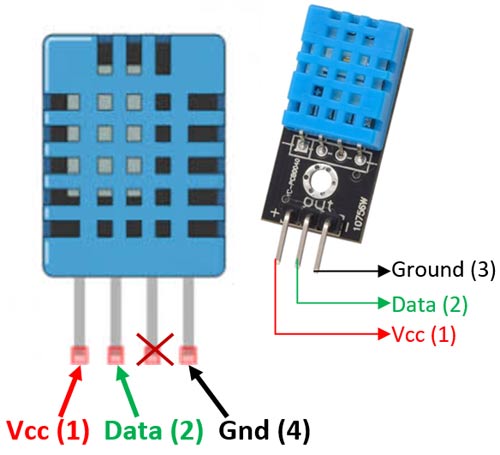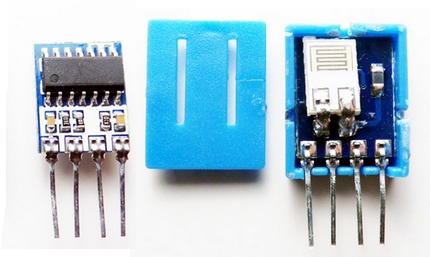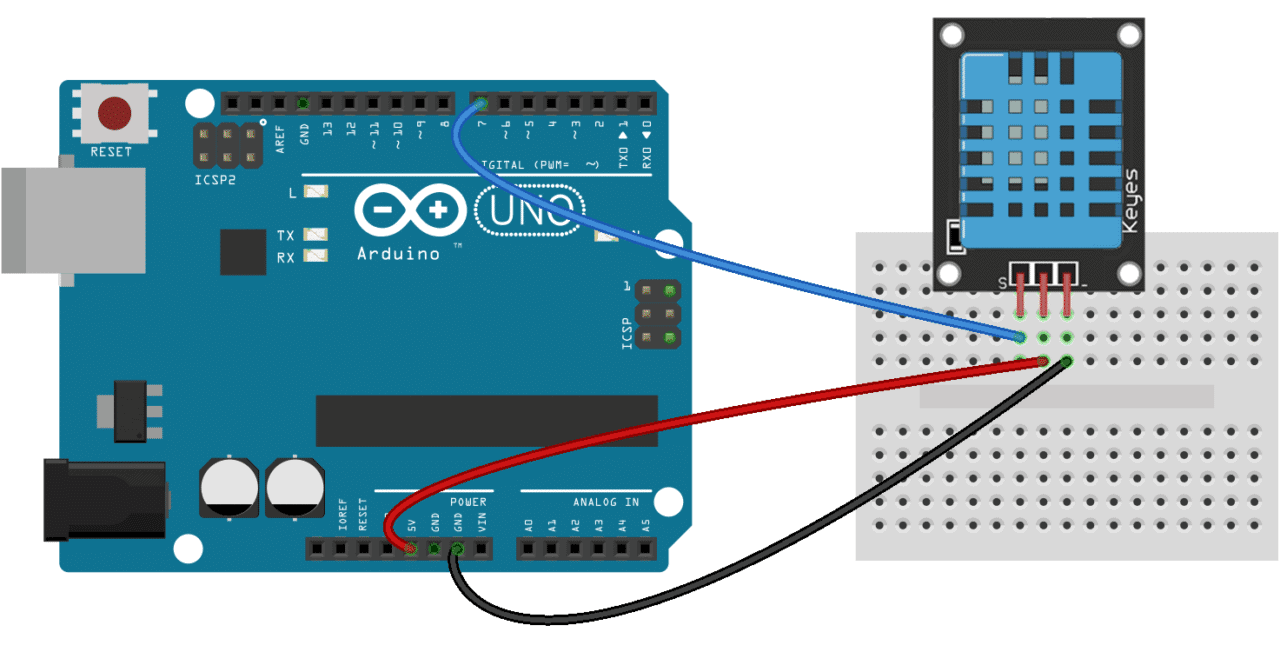Component: Temperature & humidity sensor [DHT 11] - Albin-Tenghagen/The-Fellowship-of-the-Code-Flood-checker GitHub Wiki
Component: Temperature & humidity sensor [DHT 11]
Short Description
The DHT11 is a low-cost digital sensor that measures temperature and humidity. It uses a resistive humidity sensing element and an NTC thermistor, providing calibrated digital output through a single-wire interface. Compact and energy-efficient, it's ideal for basic environmental monitoring projects.
Technical Specifications
| Items | Conditions | Min | Norm | Max | Unit |
|---|---|---|---|---|---|
| VCC | - | 3.3 | - | 5 | Volts |
| Measuring Current Supply | - | 1.3 | - | 2.1 | mA |
| Average Current Supply | - | 0.5 | - | 1.1 | mA |
| Measuring Range | Humidity | 20% | - | 90% | RH |
| Temperature | 0 | - | 50 | °C | |
| Accuracy | Humidity | - | - | ±5% | RH |
| Temperature | - | - | ±2 | °C | |
| Sensitivity | Humidity | - | - | 1% | RH |
| Temperature | - | - | 1 | °C | |
| Repeatability | Humidity | - | ±1% | - | RH |
| Temperature | - | ±1 | - | °C | |
| Long-term Stability | - | - | ±1% | - | RH/year |
| Signal Collecting Period | - | - | 2 | - | S |
Pin Layout

Source: Components101
- VCC - 3.3V or 5V
- DATA - Serial Data Output
- GND - Ground
Operating Principle
The DHT11 Sensor uses two separate sensing components for monitoring

Source: OPENLAB
Humidity Sensing:

Source: howtomechatronics
To measure humidity the humidity sensing component has two electrodes with moisture holding substrate between them. So as the humidity changes, the conductivity of the substrate changes or the resistance between these electrodes changes. This change in resistance is measured and processed by IC which makes it ready to be read by MCU:s.
NTC Temperature Sensor Termistor:

Source: howtomechatronics
For measuring temperature these sensors use a NTC temperature Sensor or a Thermistor. A Thermistor is a variable resistor that changes its resistance with change of temperature. These sensors are made by heating and compressing semiconductive materials like ceramics or polymers, which makes them respond with big resistance changes even from small temperature changes. The NTC means “Negative Temperature Coefficient”, which makes that the resistance decreases with increase of the temperature.
Example Wiring

Source: circuit basics
Example Code

Considerations
- Long-term exposure to strong sunlight and ultraviolet light may degrade the performance of the DHT11 sensor. The quality of the connection wires affects communication quality and distance. It is recommended to use high-quality shielded wires.
- Storage: Store the sensor at a temperature between 10–40°C and humidity below 60% RH.
- Relative humidity is highly affected by temperature. Although the DHT11 uses temperature compensation technology to improve accuracy, it is still important to ensure that both the humidity and temperature sensors operate under the same temperature conditions. To avoid inaccurate readings, the DHT11 should be mounted away from heat sources or components that generate heat.